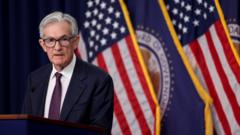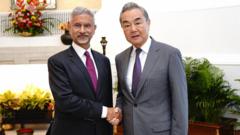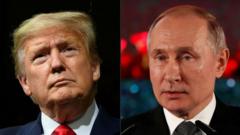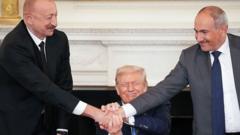The Federal Reserve has decided to keep its key interest rate unchanged for the fourth consecutive meeting, holding steady at 4.3%. This decision comes amidst worsening economic forecasts, rising inflation, and external pressure from President Trump. While inflation remains above the Fed’s target, central bank officials are cautious in their approach, signaling a "wait-and-see" stance as they navigate complex economic dynamics.
Fed Keeps Interest Rates Steady Amid Economic Uncertainties

Fed Keeps Interest Rates Steady Amid Economic Uncertainties
Despite a turbulent economic landscape, the Federal Reserve maintains its interest rate, citing wider uncertainties that influence the U.S. economy.
The Federal Reserve has opted to maintain its key interest rate at 4.3% for the fourth consecutive month, reflecting a cautious approach amid mounting economic uncertainties. Despite increased inflation and predictions of slower growth and rising unemployment, the central bank is choosing to hold off on adjustments. This steady stance is seen as a response to factors like tariffs and changing economic conditions that have prompted calls from President Trump to cut rates. Central bank officials are prioritizing data-driven decisions, indicating a preference for further information before committing to any shifts in monetary policy.
In their latest announcement, the Fed acknowledged that the broader economy remains "solid," even as it projected growth to drop to 1.4% this year, down from earlier estimates. Policymakers also lifted their inflation forecast to around 3% and predicted an increase in unemployment to 4.5%. As the economic situation evolves, comments from key stakeholders, including President Trump, reveal ongoing tension between the administration and the Fed. Notably, Trump's recent criticisms of Fed Chair Jerome Powell reflect a wider frustration with the bank’s independent decision-making process, potentially complicating future economic stability efforts.
Looking globally, other central banks are taking different paths, with the European Central Bank reducing interest rates in response to economic conditions. However, experts suggest that the Fed’s commitment to its cautious approach is in part due to a desire to uphold its independence amid external pressures. In light of these developments, the balance between inflation management and economic growth continues to shape the Fed's monetary policy decisions, with potential ripple effects across the broader economy.
In their latest announcement, the Fed acknowledged that the broader economy remains "solid," even as it projected growth to drop to 1.4% this year, down from earlier estimates. Policymakers also lifted their inflation forecast to around 3% and predicted an increase in unemployment to 4.5%. As the economic situation evolves, comments from key stakeholders, including President Trump, reveal ongoing tension between the administration and the Fed. Notably, Trump's recent criticisms of Fed Chair Jerome Powell reflect a wider frustration with the bank’s independent decision-making process, potentially complicating future economic stability efforts.
Looking globally, other central banks are taking different paths, with the European Central Bank reducing interest rates in response to economic conditions. However, experts suggest that the Fed’s commitment to its cautious approach is in part due to a desire to uphold its independence amid external pressures. In light of these developments, the balance between inflation management and economic growth continues to shape the Fed's monetary policy decisions, with potential ripple effects across the broader economy.






















